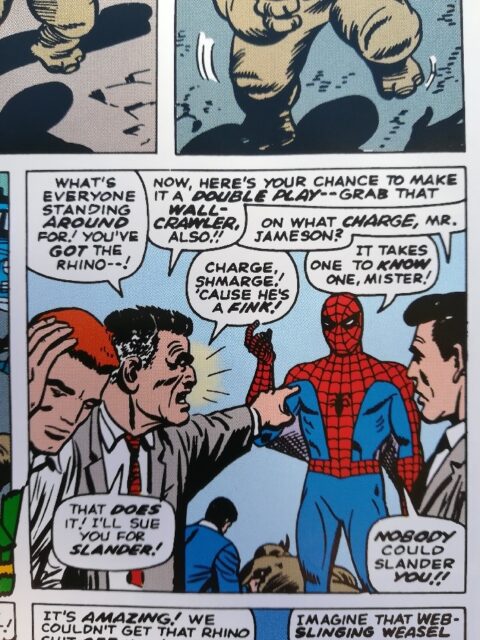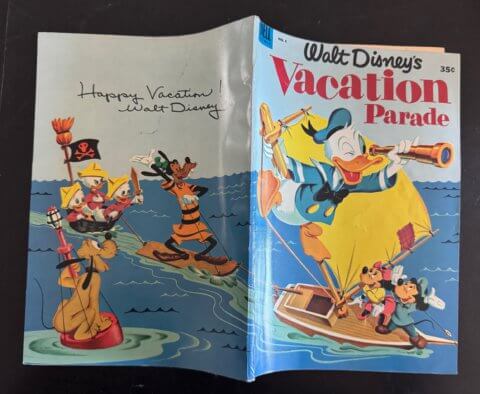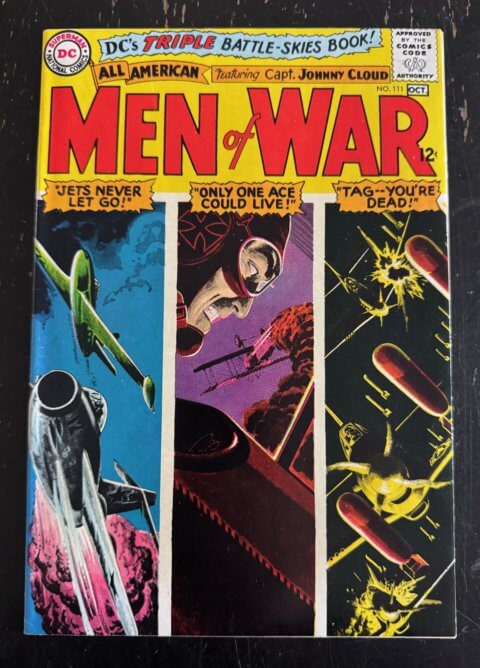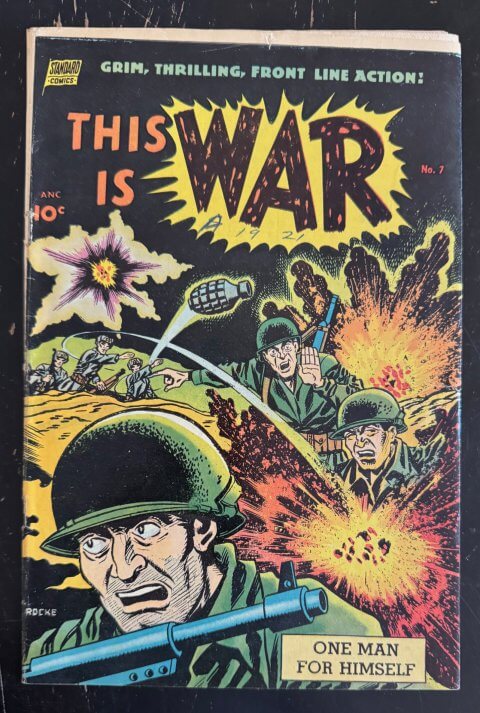I’m posting a special Time to Collect insert piece written up by my Comic Culture co-host Chris Owen. Chris loves comics almost as much as he loves – I was gonna say donuts but thought it wrong, then my mind went to Scotch but I think that may be even more wrong so I’m gonna go with – his job. Lets hand this over to Mr. Owen;

In Defense of Good Writing… The Panel
So I have been watching Walt post covers and splash pages over the last few weeks and I think there is a natural progression to want to cover another aspect, which is the comic panel. Now, panels aren’t as defined these days as much as they were in early comics. The story telling is a little more dynamic and breaks conventional rules more often. So the process became a much more difficult task to take on, however a good friend of mine sent me a panel, unknown that I had these ideas churning in my brain. He was stating how great this one panel was from Amazing Spider-Man #41 published in 1966. And after looking and reading it over and over again, he was right.
And I think this is one of the reasons why older comic collectors like myself seem to think that comics these days aren’t as good as they used to be. I still collect and read comics on a regular basis, but I find the art is always taking precedent over the writing. Now, I can pick up a modern comic and read it in about 10 minutes. Giant splash pages and minimal writing create for a really quick read. If you look at early Marvel comics in particular, they are jammed with story. What one comic these days would tell, could probably fit in a couple of pages “back in the day”. Now, I may get into some trouble here by saying that the writing isn’t as good as it once was, but I want to use this one panel as my point.
The writing in this one seemingly insignificant panel tells more story than most comics do these days. The writer creates subtext, is able to describe to the reader so much information all through both the main as well as supporting characters.
Now this panel was placed near the end of the comic, and was kind of a throw away panel, a kind of epilogue. BUT the fact that it WAS like that, speaks volumes.
It paints a picture of what is happening and “who is who”, and for anyone who has never even read a spider man comic, you understand what is going on.
If we dissect this a little, we can see that Mr. Jameson (or J. Jonah Jameson for those who DO know) is angry with the Wall-Crawler (who we know is Spider-Man) and is asking the police to arrest him. So JJJ hates Spider-Man.
Now, the police are asking “On what charge..?” So we can gather that if there are no real charges, that Spidey is a good guy, with no charges against him.
We see the Rhino being taken away in the background and JJJ also states that “You’ve got the Rhino” to the police, so we know that the Rhino must be a bad guy as well.
J. Jonah could be seen as bad guy because he’s on the opposite side of Spidey who’s obviously good with no charges against him. However, JJJ isn’t getting arrested so he’s not necessarily bad enough as to be charged, but rather disgruntled.
So we now have protagonists, antagonists and those maybe in between all set up.
From here we can see that there is an established relationship with Spidey and JJJ. Even though we know that Spidey isn’t in need of being arrested, we see JJJ wanting this to happen. So there must have been previous confrontations between the two. And when JJJ says that Spidey is a “fink” and that Spidey retorts with “It takes one to know one, mister”, we can again determine that there is probably a pre-existing relationship.
Here is where it gets a little more interesting:
The part “charges schmarges!” goes to show Jameson doesn’t care about the rule of law or facts, but only that Spider-Man is “guilty” based on personal bias. We can gather that JJJ probably feels like he is even above the law for telling the police how to do their job and who to arrest.
Then there’s the subtext of the back and forth. Jameson insults Spidey, who gets in a zinger. Ego bruised, and realizing he can’t attack Spidey on criminal grounds, he decides to go for an attack and threaten to sue (not knowing, ironically, that if there’s one person who can’t afford to be sued, it’s his own employee! Jameson would, essentially be suing his own money back!). Spidey gets in another zinger, and based on Jameson’s actions – in front of witnesses – Spidey’s zinger rings true. Jameson’s original court – the court of public opinion – has been turned against him by his own actions!
And here’s the thing, what is seemingly the least important aspect of this whole panel, actually speaks volumes, the size of the panel. This one small panel indicates that this was not the whole story. It wasn’t the basis of an entire book like nowadays where we would giant splash pages of Jonah yelling at either the cops or Spidey. This is one seemingly insignificant panel that ADDS to the story and doesn’t become the story. It helps to narrate the larger picture of an ongoing struggle. It has fleshed out supporting characters who add to the bigger whole without taking away. Now, I’m not a writer and I don’t propose to be one. But I do think this is a good example of great story telling, art and writing. As I said earlier, it would seem this one little panel could almost be made into an entire comic these days.




5
You’ve hit upon the reason I gave up on new comics; artists spending hours drawing basically what are posters yet the comics have no real story. Older comics were entertaining for the writing as well as the art.
I know we agree on several reasons for the lagging sales of the current comics industry and this is a prime example! You have proven that one panel in a vintage comic has more story then an entire year written by Brian Michael Bendis! I know when I was a kid I spent what seemed like hours pouring over a book… occasionally I would find one of those spinner racks that they never culled earlier issues and I might get three books in a row of a title and that and a jawbreaker would be my entertainment for a DAY!
You’re obviously on the payroll of that no-good rat-fink Spider-Man!!!
Klaus, I’ve thought about giving up on new comics but I just can’t seem to do it yet. I agree with you.
Gerald, you made me laugh! Yes! BMB, could make make an entire year out of one panel. Too funny. Love the story.
Ian, all I have to say is charge, shmarge!
One more thought on this: As I have noted on this site before I have a current interest in vintage Archie. I am amazed that in at least prior to the sixties …All the stories were not only done in one, but were 7 pages or less… with the bulk of stories one page, half page, strips or single panels. While some you could simply call gags… others had a story with a setup, action, and consequence in an awfully small space! Is it any wonder Archie has been popular for so long with kids? I love continuity… but in our modern time a story thats dragged out for a year or longer can alienate anyone from jumping on mid story, or cause people to lose interest over the span of time! I liked the days of the 2-3 issue story arcs… Secret Wats may have been a fun event… but its lasting effect, I feel, have been detrimental to comics in general.
BENDIS!!!
I like some of the dawn out stories approach of modern comics, when done right its quite engaging. The main reason I’m against it though is the economics, that could end up being an expensive – and quick -read.